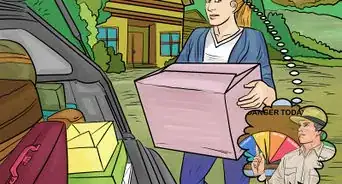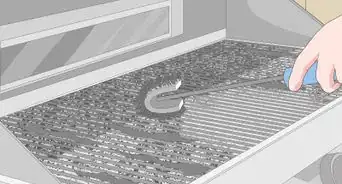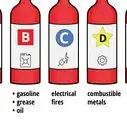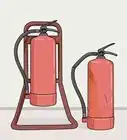X
This article was co-authored by wikiHow Staff. Our trained team of editors and researchers validate articles for accuracy and comprehensiveness. wikiHow's Content Management Team carefully monitors the work from our editorial staff to ensure that each article is backed by trusted research and meets our high quality standards.
This article has been viewed 50,240 times.
Learn more...
Fire extinguishers are important safety devices, but they can be harmful if they aren’t disposed of properly. By emptying your extinguisher and removing the exterior accessories, you can make your extinguisher ready for recycling. Remember to connect with local resources to recycle or discard your extinguisher in a responsible way.
Steps
Part 1
Part 1 of 3:
Emptying the Extinguisher
-
1Examine the canister for the product manufacturer's name. Look on the label of the fire extinguisher for the name of the manufacturer. This is typically located in large red or black letters.
- Some common extinguisher brands are Amerex, Ansul, Badger, and Kidde.[1]
-
2Check the manufacturer’s website to see if the extinguisher has a recall. Do not attempt to transport or manipulate a fire extinguisher with an active recall. The foam or dry chemicals inside can be sensitive or combustible.[2]
- If your extinguisher has a recall, ask the manufacturer to provide direction on safe handling procedures.
- Because extinguishers often go many years without being replaced, it’s possible a recall has been issued even months or years ago.
Advertisement -
3Wear protective eyewear and a particulate mask. Wear plastic goggles and put on a mask that filters at least 95% of particles in order to safely discharge the remainder of your extinguisher.[3]
- Some extinguishers can contain toxic gasses or dust that are irritating to the lungs.
-
4Get a bucket and go to a well-ventilated area outside. Cordon off any pets or children away from where you’ll be discharging the fire extinguisher. Place the bucket on the ground where you can direct the extinguishing stream.[4]
-
5Remove the pin and release the extinguishing agent into the bucket. Point the fire extinguisher into your bucket to contain any potential dust. Squeeze the lever and aim the stream low, away from your face.[5]
- Keep the lever depressed until nothing more comes out of the extinguisher.
-
6Watch for the pressure gauge needle to fall below zero. Keep your extinguisher in a cool, dry place and check the pressure gauge periodically. It may take between a few hours to a few days for the pressure in the canister to dissipate completely.[6]
- Keep pets and children away from the extinguisher during this time.
Advertisement
Part 2
Part 2 of 3:
Disassembling the Extinguisher
-
1Remove the head of the fire extinguisher. Unscrew the head of the fire extinguisher until it comes off easily. Place the head in a zip-top bag to take to the recycling plant with you.[7]
- Removing the head of the extinguisher lets others know that the extinguisher is empty and should not be kept for use.
- Typically the head of the extinguisher can simply be unscrewed with your hands like the lid of a jar. If the head is tight, use a wrench to loosen it.
-
2Remove any plastic accessories with a screwdriver. Bag any plastic components of the extinguisher, such as the tubing or hangers used to secure the extinguisher to the wall. The extinguisher is now ready to be recycled with the manufacturer or a local facility.[8]
-
3Pack the extinguisher in a cardboard box for transport. Load your disassembled extinguisher into the box and pack it firmly with newsprint on either side so it can’t move. Place the bagged accessories on top.
- Packing your extinguisher securely will keep it from being agitated in the car on the way to a recycling facility. This is critical in the unlikely event that there is any material left in the canister.
Advertisement
Part 3
Part 3 of 3:
Finding Recycling Resources
-
1Contact the manufacturer to determine if a recycling program is in place. Call the customer service phone number of your extinguisher’s manufacturer. Ask a representative if they recycle your model of extinguisher.
- The model number of your extinguisher can be found on the label. Whether or not the manufacturer will recycle your extinguisher typically depends upon whether the contents were chemical retardants or simply dust or foam under pressure.
- If they will recycle your extinguisher, ask about local drop-off points and how to package your materials for proper recycling.
-
2Call your jurisdiction’s EPA to find a local recycling center. Navigate to your state or county’s municipal website and look for the phone number of the local environmental protection agency. Call them to inquire about local recycling options for fire extinguishers.
- Ask the agency if there are any special protocols you need to adhere to before your extinguisher can be recycled.[9]
- Some centers will only recycle extinguishers of a small size or those that are not refillable.
-
3Reach out to a fire-safety trade association for additional recycling options. Perform an online search to locate a fire safety trade association, such as Connected Fie Safety Services, near you. Call and ask a representative if they accept fire extinguishers from the public for recycling.
- Take down pertinent information about the specific kinds of fire extinguishers the association accepts and any restrictions about drop-off times or packaging.
-
4Use a local hazardous-waste center if recycling isn’t possible. Consult your town’s municipal website to find a hazardous waste disposal center near you. Sometimes, despite your best efforts, there will not be recycling resources for fire extinguishers in your area. A hazardous-waste disposal facility can throw away your extinguisher safely.[10]
- Hazardous-waste centers are equipped to break down your extinguisher into its component parts if necessary for proper disposal.
Advertisement
Community Q&A
-
QuestionHow do I refill an extinguisher?
 Community AnswerTake it to your local fire department, or buy a new one. I took mine to a local fire department and they did it for me.
Community AnswerTake it to your local fire department, or buy a new one. I took mine to a local fire department and they did it for me. -
QuestionUnless I missed it, the article didn't mention how to dispose of the contents of the extinguisher. The canister and valve aren't the challenge, the actual extinguishing agent is.
 Community AnswerDepends on the type. If it's water, then just spray it out. For others, just go to your local fire department's website, find a number to call and they will dispose of it for you.
Community AnswerDepends on the type. If it's water, then just spray it out. For others, just go to your local fire department's website, find a number to call and they will dispose of it for you.
Advertisement
Warnings
- If you accidentally spray yourself with fire extinguishing foam or dust, flush your eyes with plenty of water and remove your contact lenses. Rinse your skin with warm water and soap. Then, contact your local poison control center.⧼thumbs_response⧽
- Most extinguishers are mildly irritating to the skin and lungs rather than acutely dangerous. It’s always best to contact a poison center or local physician just to be safe, though.⧼thumbs_response⧽
Advertisement
References
- ↑ https://www.safewise.com/resources/fire-extinguishers-buyers-guide
- ↑ http://www.ecocycle.org/a-zguide/fire-extinguishers
- ↑ http://www.zendergroup.org/docs/fireext.pdf
- ↑ https://www.denvergov.org/content/denvergov/en/trash-and-recycling/recycling/recycling-directory-dropoff-locations.html#!rc-cpage=41174
- ↑ http://www.zendergroup.org/docs/fireext.pdf
- ↑ https://www.denvergov.org/content/denvergov/en/trash-and-recycling/recycling/recycling-directory-dropoff-locations.html#!rc-cpage=41174
- ↑ https://www.denvergov.org/content/denvergov/en/trash-and-recycling/recycling/recycling-directory-dropoff-locations.html#!rc-cpage=41174
- ↑ http://www.zendergroup.org/docs/fireext.pdf
- ↑ https://www.recyclenow.com/what-to-do-with/fire-extinguishers-1
About This Article
Advertisement

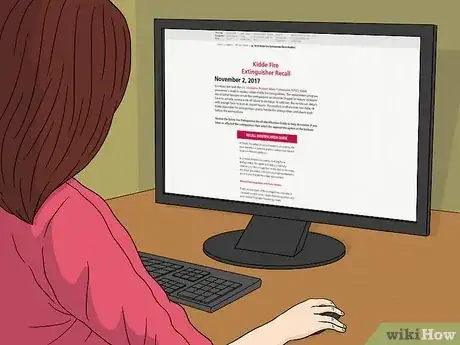
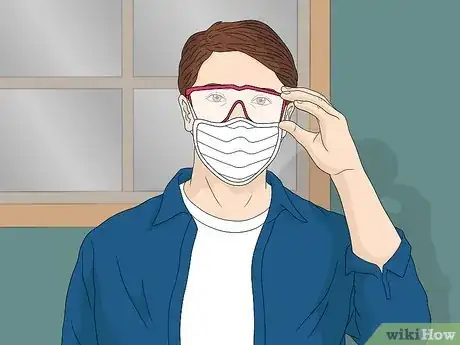
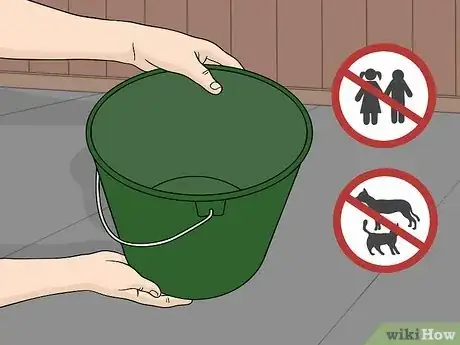
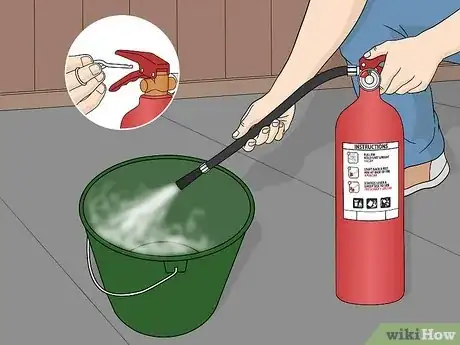

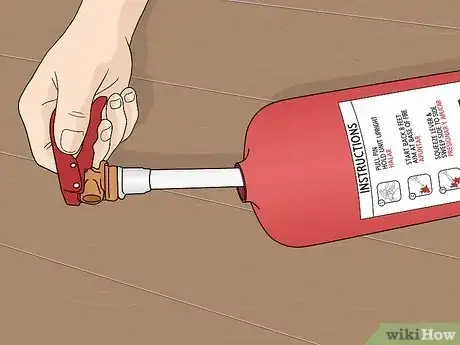
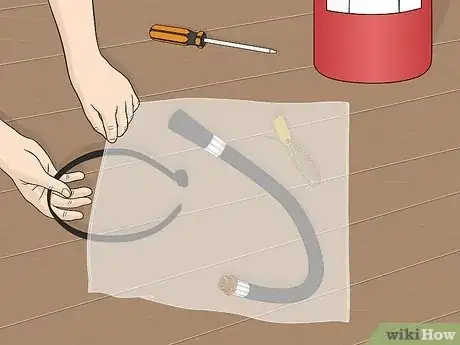
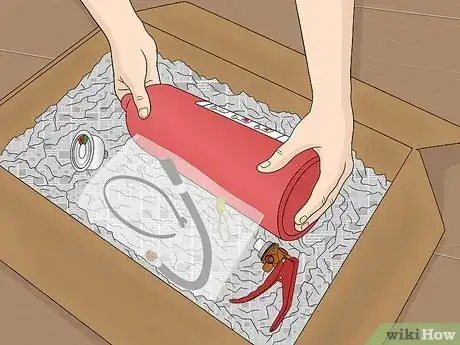
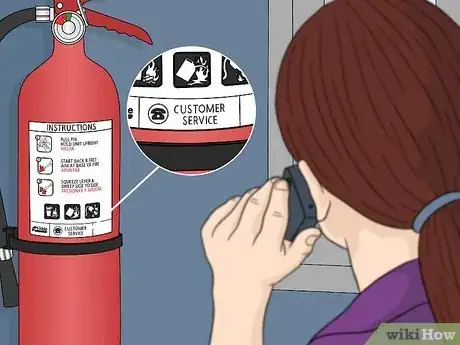
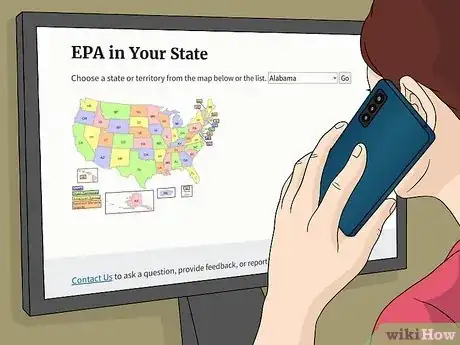
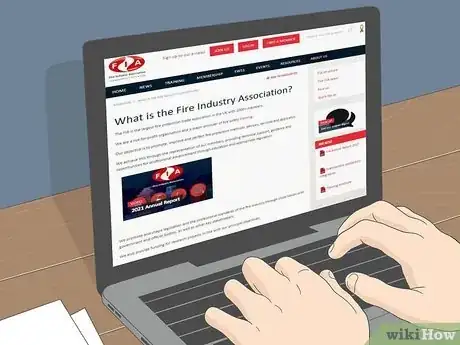
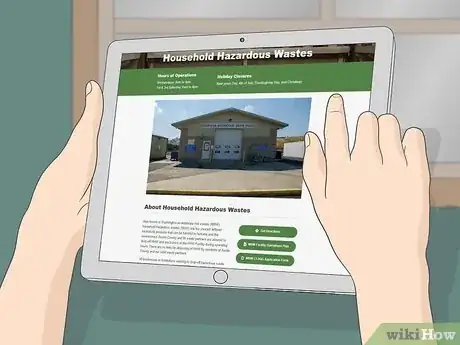
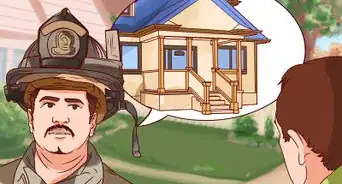

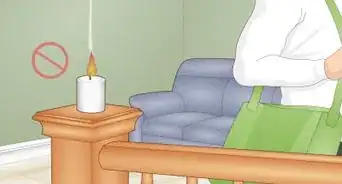



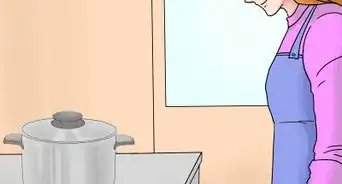

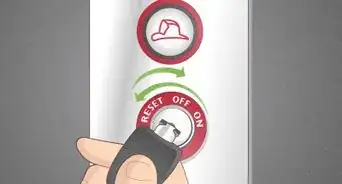
-Step-11-Version-2.webp)
